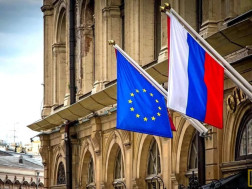The majority of pupils in primary and secondary education in the EU study at least one foreign language: in 2020, 96.1% of pupils in primary education, 98.4% of students in lower secondary and 90.3% in upper secondary education in the EU studied at least one foreign language.
In 2020, 60% of pupils in upper secondary general education (ISCED level 34) in the EU studied two or more foreign languages as compulsory subjects or as compulsory curriculum options, 1 percentage point (pp) more than in 2019. In upper secondary vocational education (ISCED level 35), this share was 35%, also 1 pp higher than in 2019, EuroStat reports.
In Luxembourg and France, all students in upper secondary general education studied two or more foreign languages. Romania, Finland and Czechia also registered a large share of students studying two or more languages (all 99%). These Member States were followed closely by Slovakia and Estonia (both 98%), Slovenia (96%) and Croatia (94%).
When it comes to upper secondary vocational education, Romania led as the only Member State where almost all students (97%) studied two or more foreign languages in 2020. Finland (89%) followed, with Luxembourg and Poland (both 77%) coming next.
Data is also available on shares of students studying no foreign languages, one foreign language or more than one foreign language and for primary and lower secondary education levels.
English leads in general and in vocational upper secondary education
In 2020, English was the most commonly studied foreign language at the upper secondary general and vocational education level in the EU, with 96% and 79% of students learning it, respectively.
In terms of general education, Spanish ranked second (27%), followed by French (22%), German (21%) and Italian (3%). In addition, Russian was the non-EU language most commonly learned in the EU (3%), especially in Estonia (67%) and Latvia (57%), followed by Lithuania (30%) and Bulgaria (24%).
In vocational education, German came in second (18%), followed by French (17%), Spanish (7%) and Russian (2%). In this case, Russian was learned in Latvia (44%), Bulgaria (25%) and Cyprus (16%).
















